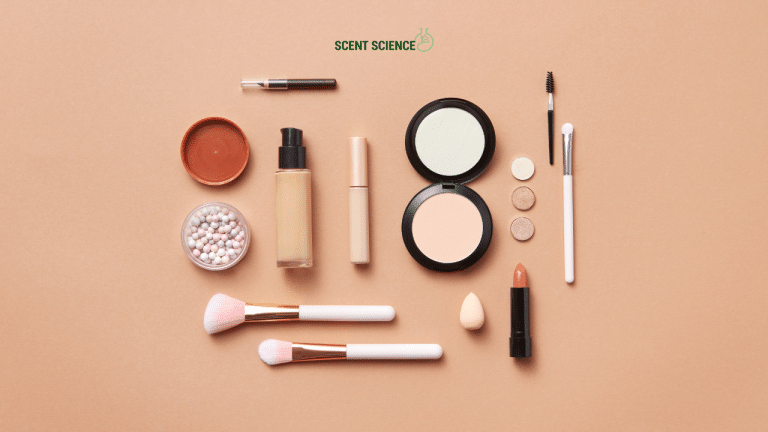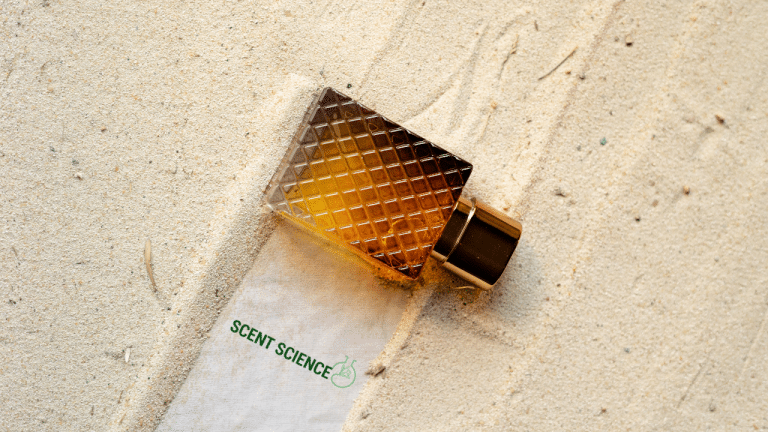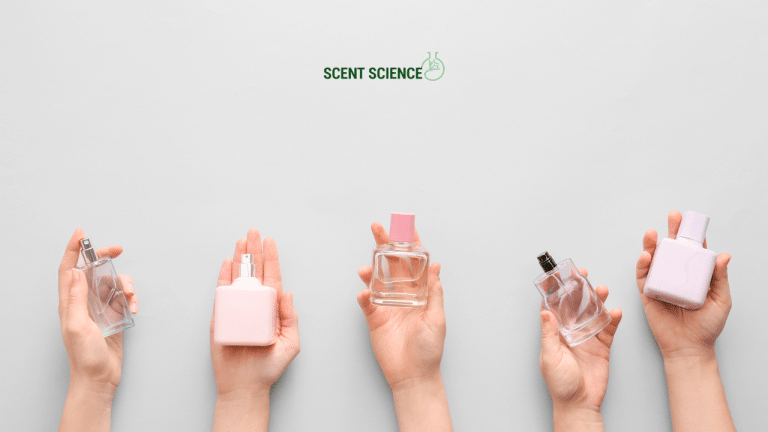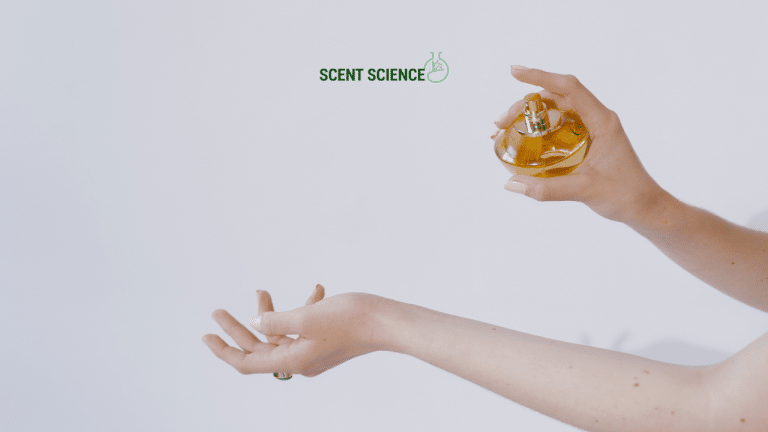Picture this: it’s a blazing summer day, and you’re reaching for your favorite bottle of perfume, hoping it delivers that familiar comforting aura. But instead of a symphony of floral notes, you’re greeted by a peculiar, distorted fragrance. Annoying, right? You’re not alone. Many perfume aficionados experience this perplexing phenomenon, and here’s the kicker: the culprit is often the temperature.
Table of Contents
ToggleWhat’s Going On with Perfume Chemistry?
Perfume chemistry is a fascinating dance of volatile molecules. When it comes to how we experience scents, it’s all about those tiny smell molecules escaping into the air and reaching our noses. Here’s the scoop: temperature plays a massive role in this drama. Too hot, and these molecules vanish too quickly—your scent doesn’t stand a chance of a graceful waltz. Too cold, and they hover stubbornly on the skin, reluctant to make their debut.
Heat Wave: The Summer Struggle
Summertime and perfume. They aren’t always best buds. In high temperatures, the heat acts as a hyperactive conductor, speeding up the evaporation of your fragrance. As a result, the top notes race ahead, leaving the deeper, richer base notes to fend for themselves. It’s kind of like watching a movie where the best scenes are rushed, robbing the story of its depth and nuance.
But hey, don’t despair just yet. You can still enjoy your scent in the summer. Give this a shot: store your perfumes in a cool, dark place. You might want to rethink that sunny bathroom shelf or your car’s glove compartment on a sunny day. Trust me on this one—the fridge can be a perfume’s best friend during a heatwave.
On cooler skin, apply less. The pulse points behind your ears, on your wrists—those spots will naturally radiate more heat and help your perfume blend smoothly with your chemistry without going bungee jumping off your skin.
Frigid Factors: The Winter Dilemma

Then, there are winter woes. Cold temperatures can transform your fragrance’s vibrant, inviting melody into a slow, subdued hum. It’s like closing the curtains halfway on a bright day—everything’s dim and distant.
Here’s the deal: cold can make your perfume feel shy. It suppresses the molecules, slowing them down so that it takes longer for your perfume to develop fully. Your scent might hang awkwardly in limbo, leaving you wondering if you even sprayed enough. If you’ve been there, give the ol’ layering technique a try. A matching-scented lotion or body oil provides a base, warming the fragrance molecules and urging them to step into the spotlight.
Oh, and just to loop back slightly—those pulse points? They’re even more crucial in cooler temps. A dab on the inside of your elbow and behind the knees gets things moving. Sneaky, but it works!
What About Humidity?
Let’s weave in humidity—it partners with temperature to toy with perfume’s chemistry. In humid conditions, heavier scent molecules linger longer, which sometimes makes a fresh, green aroma seem cloying. Conversely, dry cold can rob a scent of its moisture, leaving it flat and tired.
When it’s humid, stick with those lighter scents, like citrus or aquatic notes that shimmer without suffocating. On dry days, feel free to indulge in headier perfumes; they’ll appreciate the opportunity to showcase their complexity.
Hormones and Individual Chemistry
Let’s pause and chat about another companion in the fragrance game—your body’s chemistry. Have you ever heard of a scent smelling divine on someone else, but a bit *off* on you? It’s all about those intricate interactions between the perfume and your unique skin chemistry, impacted by factors including diet, hormone levels, and even medications. Food for thought, right?
Environment Bliss: Adapting to the Elements

Addressing perfume chemistry without acknowledging broader environmental effects wouldn’t really do it justice. Think of how aromas change distinctly indoors versus outdoors. Stale, conditioned air indoors can compress fragrance notes, making them appear truncated. Meanwhile, out in nature, with the sun and wind playing along peripherally, your scent enjoys a more dynamic play.
Choosing Wisely: Scent Types by Weather
- Citrus & Aquatic: Perfect in warmer, humid settings for a clean, refreshing feel.
- Woody & Warm Orientals: Reserve for cooler or dry days, even wintery nights, when layered clothing complements layered, deep scents.
- Floral & Fruity: Versatile, but they can morph dramatically with temperature shifts—so test them out in different settings as a precaution.
Myth-busting Perfume Storage
Many devotees ask, “What’s the ultimate spot for my perfume collection?” Good question. Sunlight and temperature fluctuations can lead the most robust fragrances to sour faster than a milk carton. You don’t need a vault—just follow a couple of sage guidelines.
- Dark Cabinets/Closets: Low-light, stable-temperature spots are ideal.
- Avoid Bathrooms: Fluctuating humidity and heat do no favors to scents.
- Dedicate a Tray: Collate your perfumes on a pretty tray somewhere personal. Sure, fridges might work, but nearby, un-encased scents are exhibit pieces too.
Applied Temperature Wisdom: Practical Wrap-up

Here’s how you can harness the full potential of perfume chemistry within your everyday environment:
- Monitoring and Adjusting: Like all art forms, practice makes perfect. Keep a journal if you must. Track which scents get better play during specific temperature conditions.
- Traveling Tips: Smaller, rollerball perfumes let you adjust fragrance discreetly. Plus, easy TSA-approval!
- Sampling Saviors: Before investing, sample how different perfumes perform under fluctuating temperatures at different times of day.
- Self-Awareness: Remember your shifts—hormonal, emotional, or otherwise—can lead perfumes to blossom or wither unpredictably. Gentler days set softer tone.
At the end of the day, choosing the right perfume is deeply personal—and yes, chemical magic. Temperature dances with perfume in a thrilling, sometimes tumultuous partnership, from the atmospheric symphony of summer honeysuckles to the chilled nuances of snowy spice. Embrace it. Let the aroma adventure open up worlds of discovery and invite astonishment as scents blend intricately with every condition and composition. After all, it’s the science of beauty, laid open for every nose to explore. Enjoy the journey—it’s your ephemeral fragrance-canvas.
Frequently Asked Questions
What are the different notes in perfume chemistry?
In perfume chemistry, fragrances are composed of three main notes: top notes, heart notes, and base notes. Top notes are the initial scents that evaporate within the first 15 minutes, often including sharp, fresh smells. Heart notes emerge after 3 to 4 hours and provide the core of the fragrance, typically featuring florals, spices, and fruity scents. Base notes are the longest-lasting, appearing within 5 to 8 hours and usually consisting of musky, woody, and resinous scents[1][3].
Why do perfumes need to be diluted?
Perfumes need to be diluted for several reasons. Dilution in alcohol or water helps to fully release the scent of some ingredients, prevents the density of essential oils and aroma-chemicals from being harsh on the skin, and acts as a carrier to ease application and create a sillage (the trail of scent left behind)[1][5].
What role does chemistry play in the creation of perfumes?
Chemistry plays a pivotal role in perfumery, as it involves understanding how different molecules interact to produce a desired scent. Perfumers use both natural and synthetic molecules, each contributing uniquely to the overall fragrance. The structure of these molecules, including their size, shape, and functional groups, determines their scent and longevity[1][3].
How does the storage of perfume affect its chemistry and longevity?
The storage of perfume can significantly affect its chemistry and longevity. Visible light can break the bonds in fragrance molecules, and exposure to air can cause oxidation, which can degrade the fragrance. To preserve perfumes, they should be stored at room temperature, in the dark, and in a spray bottle, which can help maintain their quality for at least two years[1].
References







